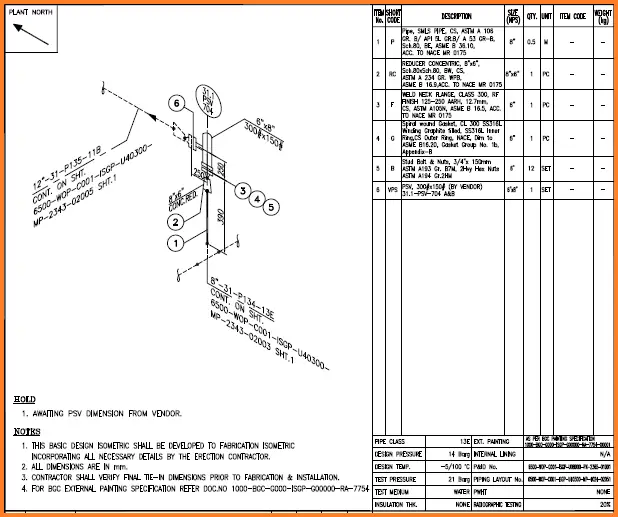What is the meaning of HOLD in Engineering Deliverables?
While dealing with day-to-day engineering activities It is required to issue many engineering drawings or documents by placing a “HOLD” in the drawing or document. During the initial phases of any project, all required data is not available. To progress any activity, Engineers and designers need to issue it as all process piping activities are interlinked with various departments, normally starting with the process engineering department.
If the process team does not issue the initial P&ID, other departments will not be able to proceed with their design work. So initial revision of documents is issued by placing “HOLD” for items that are not yet designed as final or vendor confirmation is not yet received. Also, Payments for any project is interlinked with document issue. So, with the initially issued documents, some percentage of project progress is achieved from the client, and accordingly, payment is received by the Engineering Consultant. So this hold term in project deliverables is very important. Should the work process stop when a “HOLD” is placed on some aspect of the work?
Various Reasons for HOLD
So, The average “HOLD” by itself does not mean a work stoppage. However, there are cases of unusual situations that might cause a complete halt to all the work. It would have to be a major issue of magnitude that would be a deal-breaker for the total project.

All other “HOLDS” tend to be:
A. HOLD for Undefined item
This might be any item like line size that is missed/not confirmed or an item like a Pump outline that has not yet been received and/or is yet due.
B. HOLD because of Unapproved Item
This might be the situation that an item has been completed and submitted to the Client (or Vendor) for approval but final confirmation of approval or comments is not yet received.
C. HOLD due to Unresolved Item
This might be an item of work in any engineering team that depends on input from another engineering group or entity. It could also be a case where something has been submitted to the Client for approval and not returned yet.
There might be a possibility that the Detailed Design Contractor of a project sees a “HOLD” as a way of increasing revenue if the project is being worked on a “Cost Plus” basis. With this, the contractor could fatten their Fee and Profits by extending the work process.
As a client representative, One might want to institute the Master “HOLD” Control list and a review process for all “HOLDS”.
In the project’s progress, A Hold Point is a very critical step that is required an inspection, approval, or permit prior to moving further steps according to the procedure or specification.
Good Engineering Practice
Good Engineering practice in design organizations is to maintain a master hold list and before issuing any deliverable as issued for construction, all HOLD items are cleared. But still, there may be some difficulties found during construction, mainly while working with existing plants due to clashing. In such aspects, the construction work is kept on “HOLD” for a certain period of time and after the resolution of the same by the concerned design team, the work is finished.
Some more resources for you..
Piping Design and Layout
Piping Stress Analysis
Piping Interface Departments like Process, Mechanical, Civil, Inctrumentation, etc
Piping Materials
About the Author: Part of this article has been prepared by Dr. Javier Blasco Alberto, Associate Professor, School of Engineering and Architecture, University of Zaragoza. He also collaborates actively with InIPED.








